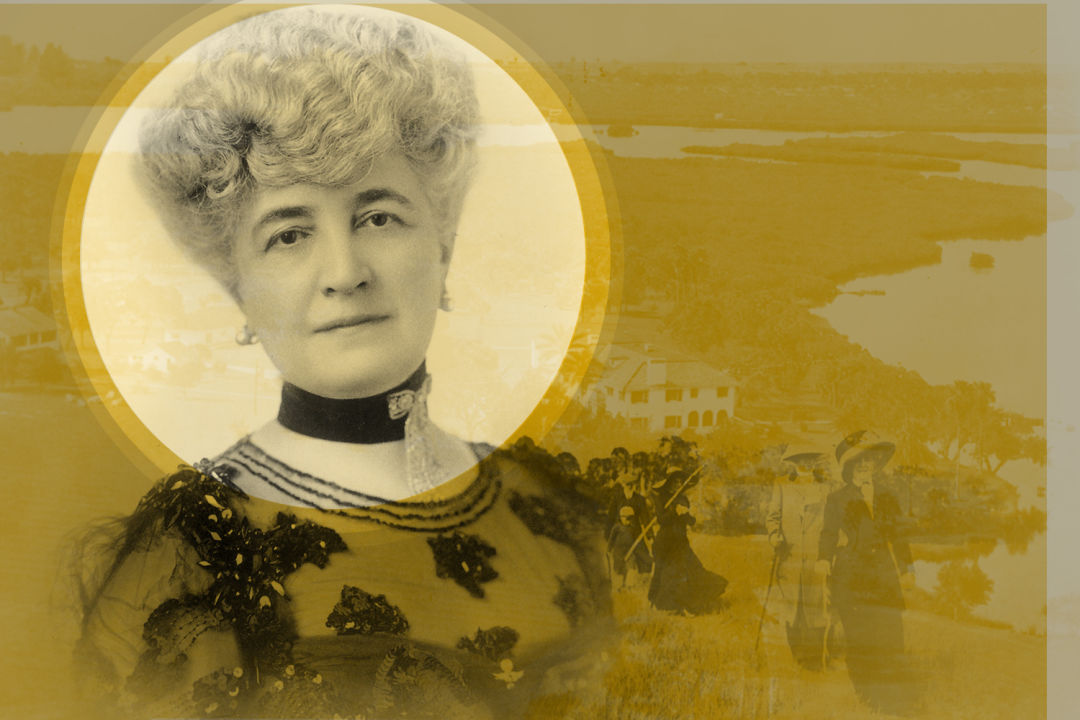Bertha Honore Palmer Left Her Mark as a Developer, Philanthropist and Innovator in Early 20th-Century Sarasota

Mrs. Bertha Honore Palmer
Of all of the women in Sarasota history we’ve featured over the past few weeks, probably none remains more impactful than Bertha Honore (Mrs. Potter) Palmer, whose family names are attached to roadways (Palmer Boulevard, Honore Avenue) and major residential developments (Palmer Ranch) and associated with the Osprey site of her home The Oaks, at today’s Historic Spanish Point.
Consider that she and her real estate development interests acquired more than 80,000 acres of land in what was then Manatee County from 1910 through 1918, when she died. Beyond the Osprey property where she built a comfortable home and beautiful gardens, she was also a rancher who operated 15,000 acres she called Meadowsweet Pastures in the Myakka River area (the genesis for Myakka River State Park), as a very hands-on manager who experimented with raising a variety of vegetable crops and cattle.
That all sounds a far cry from the storied life Bertha lived in Chicago after her marriage to mercantile magnate Potter Palmer in 1870. Young, beautiful, intelligent and charming, Bertha in her Chicago (and international) years was well known for her extravagant jewelry and clothing, lavish entertaining, and, with her husband, an ever-growing collection of art leaning heavily on the Impressionists. (Anyone who’s taken a stroll through the Art Institute of Chicago has glimpsed important works gifted by the Palmers to that museum.)
But beyond the glamour, Bertha also demonstrated a willingness for hard work, most especially as the chair of the Board of Lady Managers for the World’s Columbian Exposition, a monumental event opening in 1893 that celebrated the 400th anniversary of Christopher Columbus’ arrival in the New World. The Board of Lady Managers had oversight of the design and activities of The Woman’s Building for the Exposition, which heralded Chicago’s burgeoning position on the world scene. Bertha played a key role and involved other famous women—Susan B. Anthony, Julia Ward Howe, Jane Addams (whose Hull House welfare work she had long supported), painter Mary Cassatt, architect Sophia Hayden and others—in presenting exhibits and programs illustrating the progress of women through the past four centuries. The Woman’s Building displayed arts and handcrafts from around the globe, also hosting lectures and addresses; the nearby Children’s Building served as both a day care facility and an example of the latest methods of child rearing.
(On a lighter note, Bertha made a lasting contribution by working with her husband’s Palmer House restaurant staff to create a hand-held delight for fairgoers to sample: the brownie. Much gratitude owed there.)
In her later years in Sarasota, Bertha spent less time in the limelight, apparently happy working with her brother and sons to develop her land and promote the area as a retirement, recreation and investment center to other wealthy business types. Her life here was busy but simpler: spending time with her grandchildren, enjoying horseback riding, fishing and hiking, and making plans to further modernize and develop her properties that were cut short by her death of breast cancer. Her legacy is present today, in one way or another, almost everywhere you look.



